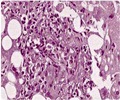Ragweed pollen spreads through seed dispersal and climate change, which could cause itchy eyes, sneezing, runny or stuffy nose, itchy throat and asthma attacks.

Scientists in France, Britain and Austria built a computer model factoring in ragweed’s seed dispersal and pollen production, prevailing winds in Europe and likely scenarios for global warming.
"Climate change and ragweed seed dispersal in current and future suitable areas will increase airborne pollen concentrations, which may consequently heighten the incidence and prevalence of ragweed allergy," the paper said.
By 2050, airborne concentration of ragweed pollen will on average be four times greater than current levels, the scientists found.
Northern-central Europe, northern France and southern Britain, where pollen loads from ragweed are negligible at the moment, will see substantial increases, and concentrations will increase in many areas that are already ragweed-affected.
About a third of the pollen increase will occur because of the weed’s highly effective seed dispersal.
Advertisement
The study, led by Lynda Hamaoui-Laguel of France’s Laboratory for Climate and Environmental Science, appears in the journal Nature Climate Change.
Advertisement
Source-Medindia















